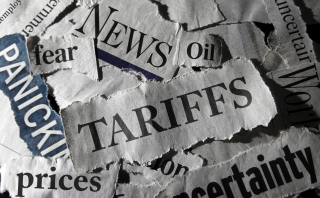When shelves emptied overnight and global shipping ground to a halt, something unexpected kept certain businesses afloat. While headlines focused on shortages and bottlenecks, a quieter story unfolded about how human connections became the most valuable currency in an economy suddenly stripped of its usual infrastructure.
The companies that survived the initial shock had something many spreadsheets and logistics models couldn’t predict: they had built relationships that mattered before the crisis hit. Those bonds became lifelines when everything else fell apart.
Trust Became the New Transaction Speed
Supply chains depend on timing, predictability, and contractual obligations. When the pandemic erased all three simultaneously, businesses discovered that trust could fill gaps that legal agreements couldn’t bridge. Suppliers who had cultivated genuine partnerships with their buyers found themselves prioritized when inventory grew scarce.
Phone calls replaced purchase orders. Buyers reached out to vendors they’d worked with through previous rough patches, and those vendors remembered who had treated them fairly during better times. The transactions that happened fastest weren’t necessarily the ones offering the highest price. They were the ones between people who had each other’s cell numbers and answered calls at odd hours.
Companies learned that relationships built on transparency survived stress better than those built on leverage. When a supplier called to say they could only deliver half an order, buyers who had been honest about their own limitations in the past received honesty in return. That mutual clarity allowed both parties to problem-solve together instead of scrambling separately.
Networks Outperformed Hierarchies
Traditional supply chain management operates through formal channels and established procedures. The pandemic revealed how fragile those structures become when normal operations cease. Businesses with diverse, interconnected networks of contacts found workarounds that rigid hierarchical systems couldn’t produce.
Someone knew someone who had access to a manufacturer still operating. Another contact had space on a flight leaving tomorrow. A third connection could expedite customs clearance. These informal networks activated because people had invested in knowing others across different sectors and regions, not through strategic planning but through genuine curiosity and helpfulness over time.
The companies that adapted fastest weren’t necessarily the largest or most capitalized. They were the ones whose employees had permission to reach out directly to contacts they’d built independently. Middle managers who had attended industry conferences, buyers who had visited supplier facilities, and logistics coordinators who had befriended their counterparts at other companies all became critical nodes in getting products where they needed to go.
Memory Mattered More Than Contracts
Every industry has stories about vendors who disappeared during the pandemic, choosing to fulfill more profitable orders while abandoning long-standing clients. Equally memorable are the suppliers who took losses to keep commitments to businesses they’d worked with through multiple cycles.
Buyers remembered both. The pandemic created a mental ledger that many businesses still reference today. When conditions normalized and options expanded again, purchasing decisions often reflected who had shown up during the crisis. Loyalty proved reciprocal in ways that surprised those who had treated relationships purely transactionally.
Businesses also discovered that their own reputation had been tested. Companies that had squeezed suppliers on price during good times found themselves deprioritized when those same suppliers faced overwhelming demand. The balance of power had shifted, and memory worked both directions. Building relationships means accepting that the roles of who needs whom can reverse without warning.
Connection Created Resilience
The pandemic didn’t just expose which businesses had strong relationships. It showed which ones understood that supply chains are fundamentally human systems dressed up in technological language. Software can optimize routing and inventory, but software doesn’t answer desperate calls at midnight or find creative solutions when standard options vanish.
Organizations that had invested in knowing their suppliers as people, not vendors, and had allowed their suppliers to know them similarly, created redundancy that no backup plan could match. These weren’t formal partnerships documented in contracts. They were working relationships where both parties understood each other’s constraints, trusted each other’s word, and believed in helping each other succeed.
When the next disruption arrives, and there will be another, the businesses that fare best will likely be the ones already building those connections now. The lesson isn’t to create strategic relationship programs or networking initiatives. It’s simpler and harder: treat people like people, remember that transactions happen between humans, and understand that how you behave during easy times determines who answers your call during hard ones.
Disclaimer: This article is intended for educational and informational purposes only. It should not be considered medical advice, professional guidance, or a substitute for consultation with qualified healthcare or business professionals. Readers should seek appropriate expert advice for their specific situations.


